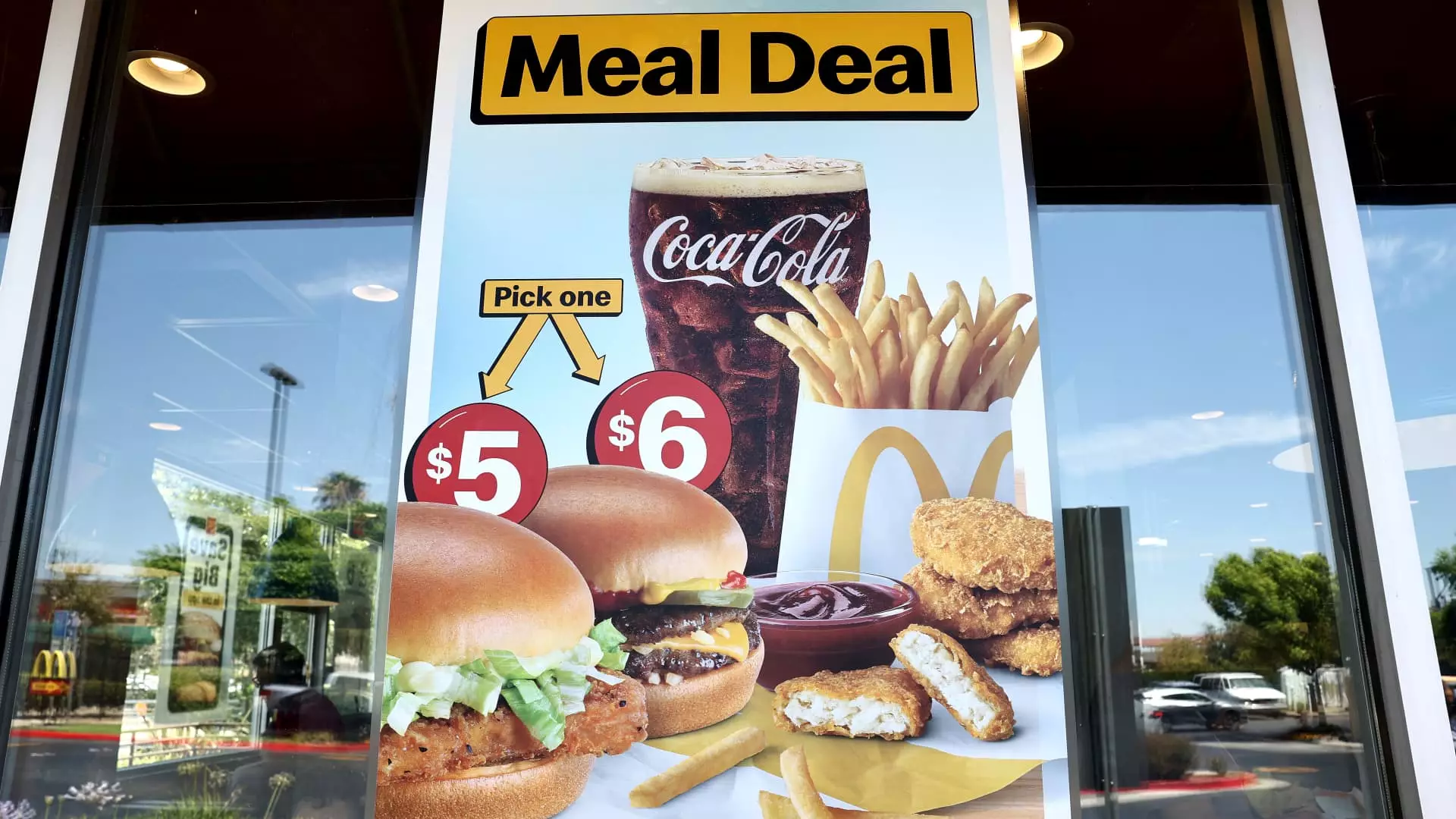In a move reminiscent of Subway’s $5 footlong promotion from a decade ago, various fast-food chains are now re-introducing or unveiling meal deals with a $5 price tag. This strategic shift is a response to the growing trend of customers slashing their spending on dining out. As quarterly reports loom ahead for many restaurant companies, there is a sense of anticipation among investors who are bracing themselves for news of declining foot traffic and sluggish sales, with a few exceptions like Chipotle. Chains like McDonald’s, Taco Bell, Burger King, and Wendy’s are hoping to drive up revenue for the next quarter by luring customers back with affordable $5 meal deals. While McDonald’s has reported an increase in foot traffic, analysts on Wall Street remain cautious about the overall impact on sales from these promotions.
Despite the historical resilience of fast food during economic downturns, recent years have seen a shift in consumer sentiment. The rising menu prices have driven away a substantial portion of the customer base, especially in the low-income bracket. A survey conducted by LendingTree revealed that more than 60% of respondents have cut back on their fast-food spending due to the perceived high costs. This change in consumer behavior has not only affected fast-food chains’ bottom line but has also reverberated across the stock market, causing share prices of major players like McDonald’s, Burger King, and Wendy’s to plummet. The fear of missing earnings estimates in the upcoming quarter has further added to the skepticism surrounding the industry.
The Battle for the Budget-Conscious Consumer
As fast-food chains grapple with declining sales and wary investors, there is a growing acknowledgment of the value proposition offered by casual dining chains like Chili’s. Brinker International’s Chili’s has actively promoted its value relative to fast food, resonating with consumers seeking affordable dining options. This shift in consumer preferences has led to a market share grab by casual dining establishments, as noted by Darden Restaurants CEO Rick Cardenas. The fight for the less affluent customer base has intensified, with industry experts highlighting the need for fast-food chains to adapt to changing consumer habits.
While $5 meal deals may drive short-term traffic growth, the sustainability of such promotions remains a pressing concern. Beyond attracting deal-seeking customers, chains must focus on converting these customers into higher-spending patrons by offering additional add-ons or upselling other menu items. Failure to upsell may result in diminished profits and undermine the long-term viability of the promotion. Franchise owners, who are already grappling with shrinking margins, are wary of discount strategies that erode their profitability. The cautionary tale of Subway’s prolonged $5 footlong deal serves as a reminder of the pitfalls of unsustainable pricing strategies.
The Franchisee Factor
Franchisees, who wield substantial power within the fast-food ecosystem, are increasingly pushing back against parent companies’ discount-driven strategies. McDonald’s franchisees, in particular, have formed associations to challenge the chain’s promotional tactics and store renovation plans. The resistance from franchise owners underscores the delicate balance between corporate strategies and franchisee interests. As fast-food chains navigate the evolving landscape of consumer dining preferences, they must engage with franchisees to ensure alignment and operational success.
The resurgence of the $5 fast food meal deal signals a pivotal moment for the industry, marked by intense competition, shifting consumer behaviors, and investor uncertainty. Fast-food chains must tread carefully as they navigate the delicate balance between value offerings and profitability. By understanding the broader market dynamics and responding strategically to evolving consumer demands, fast-food companies can capitalize on this trend and drive sustainable growth in an increasingly competitive landscape.

